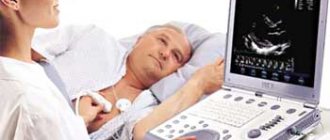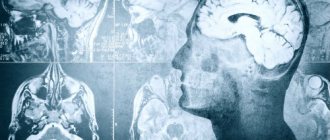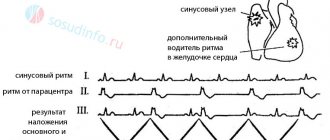One of the most common forms of dementia is Alzheimer's disease. An acquired neurodegenerative disease is characterized by the slow death of nerve cells and manifests itself as a persistent intellectual disorder. A person becomes unable to acquire new knowledge and skills, and also gradually loses previously acquired ones. In addition to memory impairment, problems arise with speech and spatial orientation. The patient loses the ability to care for himself, body functions go out.
When diagnosing, behavioral analysis, cognitive reactions, and MRI results are of great importance. Although a cure for Alzheimer's disease has not yet been found, there are ways to prevent its occurrence or reduce the severity of symptoms.
Causes of the disease
Doctors have not yet achieved a complete understanding of the cause of Alzheimer’s and the course of the disease. Apparently, the whole point is the accumulation of peculiar protein deposits in the brain tissue, which are recorded using computer, magnetic resonance and other types of tomography.
The main risk factor is old age. If under the age of 70 Alzheimer's disease is registered in three cases per 1000 people, then in 80-year-olds it is already up to 20 cases, and in 90-year-olds it is 70 cases per 1000 people. The disease is extremely rare in people under 60 years of age. Elderly women get sick more often than men.
Doctors attach great importance to genetic predisposition. A defective gene leading to the appearance of forms of proteins with neurotoxic properties was found in 50% of patients.
According to doctors, other reasons can serve as the impetus for the onset of the disease:
- brain injuries and concussions;
- psychological disorders;
- vascular problems;
- regular alcohol intake, nicotine addiction;
- obesity;
- low intellectual activity.
In patients diagnosed with Alzheimer's, after autopsy, so-called senile plaques are discovered - spherical extracellular foci of brain damage, which have negative consequences on the nervous system and brain functions.
Disease of the 21st century
In this article we will talk about the most important things about Alzheimer's syndrome, reducing as much as possible "commonplaces"
The German psychiatrist Aloys Alzheimer (1864–1915) published numerous scientific papers, but was best known for his famous lecture on an “unusual disease of the cerebral cortex” in 1906. Alois was investigating a condition in a 50-year-old woman that caused memory loss, disorientation, hallucinations and ultimately led to death at the age of 55. An autopsy showed that the patient's cerebral cortex was thinner than usual, senile plaques were detected in the extracellular space, and neurofibrillary tangles were detected inside neurons. Alois's colleague Emil Kraepelin called the disease Alzheimer's disease. The morphological criteria for AD described by Alois have remained unchanged to this day. From history, let's now move on to the actual medical aspects of the syndrome.
Prevalence
According to WHO, asthma is one of the most common diseases among older people, causing more than half of the cases of dementia and ranking 4th among the causes of death in developed countries of the world. Researchers from Johns Hopkins University estimated that in 2006 there were 26.6 million patients with asthma in the world, and in 2050 the number of patients will increase to 106.8 million. The older a person is, the more likely it is to develop this disease. If at 65–69 years old 2–5% of people suffer from it, then after 85 years this percentage reaches 30–40. Thus, “aging” countries are doomed to an “epidemic” of asthma and increased costs of maintaining patients.
Everyone suffers from Alzheimer's syndrome - both ordinary people and world-famous ones. For example, former US President Ronald Reagan, Irish writer Iris Murdoch, former British Prime Minister Margaret Thatcher, actor Peter Falk, English writer Terry Pratchett and a number of other celebrities have been or are now diagnosed with Alzheimer's disease.
https://ru.wikipedia.org/wiki/Alzheimer's Disease#cite_note-215
Etiology and Pathogenesis
The etiology of the disease still remains unclear, which is especially true for the non-hereditary (sporadic) form of AD. Against the background of natural aging processes, events specific to Alzheimer's syndrome unfold, the central ones being the deposition of α-amyloid in the cortex and hippocampus (Selkoe, 1994) and the maturation of senile plaques. This causes a cascade of molecular changes that lead to dysfunction and death of nerve cells such as apoptosis or necrosis, which is clinically expressed as progressive dementia. Cholinergic deficiency, oxidative stress, and increased levels of proinflammatory cytokines and glutamate (an excitatory neurotransmitter) occur in brain tissue.
The discovery of causative mutations in the amyloid precursor protein and presenilin genes (b-APP, PSEN-1 and) concerns very rare families with autosomal dominant forms of the disease, the so-called pedigree familial Alzheimer's disease, which affects 50% of each generation, regardless of gender , between 30 and 50 years. Mutations in the PSEN-2 gene are characterized by incomplete penetrance (i.e., they do not always lead to the development of AD); they are responsible for the development of rarer, both early and late, familial forms of the disease.
A study of pedigrees of non-familial forms of AD gives the following result: on average, the risk of developing AD for first-degree relatives is 3–14%. At the same time, studies of twins have shown a significant (but not 100%) role of genetic factors. The concordance rate for monozygotic twins (85%) is significantly higher than for dizygotic twins (42%).
Symptoms of Alzheimer's disease
There are 2 forms of asthma: presenile (with onset before 65 years of age) and senile (with onset after 65 years of age). It is extremely rare that AD can debut at the age of 30 (usually due to a mutation in the presenilin-1 gene). The disease develops asymptomatically for some time - the brain manages to compensate for the loss of damaged neurons. The clinic appears, perhaps years after the launch of the pathogenetic mechanism. An early, although not sufficiently specific, sign of Alzheimer's disease can be atrophy of the medial parts of the temporal lobes, primarily the hippocampus, detected by magnetic resonance imaging. Neuropsychological screening testing can help in diagnosing AD, in which patients copy figures, memorize words, read, and perform arithmetic operations. Differential diagnosis is primarily carried out with vascular dementia.
Risk factors for asthma currently include:
- age
- female gender (women have the disease twice as often as men)
- history of traumatic brain injury, myocardial infarction, hypothyroidism, depression, exposure to electromagnetic fields
- low serum levels of vitamin B12 and folate
- smoking
- heavy metal poisoning
- long-term use of NSAIDs
- hormone replacement therapy (HRT)
- age of the mother at the time of the individual's birth
- complete abstinence from or abuse of alcohol
The following factors are considered protective:
- intellectual work, high level of education
- daily consumption of tea and coffee
- moderate alcohol consumption
Life expectancy for patients from diagnosis averages 6–8 years, but can vary from 2 to 20 years. Less than 3% of patients survive more than fourteen years. The first symptom of Alzheimer's disease is memory loss. Memorization of new material suffers first, and professional memory is the last to be impaired. Efficiency decreases, the range of interests narrows, pronounced emotional lability, anxiety, suspiciousness and some disinhibition appear.
Later, speech disorders appear. First of all, the understanding of spoken speech suffers, but the ability to repeat words and sentences remains for a long time. In addition, patients find it difficult to name objects. The skill of meaningful verbal communication is gradually lost, and echolalia, palilalia, or mutism may occur. Praxis, gnosis and other cognitive functions are progressively impaired, personality changes, and affective disorders and psychoses (hallucinations, delusions) may develop.
Echolalia is an uncontrolled automatic repetition of words heard in someone else's speech.
Pallilalia is a person’s painful need to repeat certain words or sentences.
Mutism is a refusal of speech communication in the absence of organic lesions of the speech apparatus.
In the final stage, patients lose the ability to self-care, are disoriented in space and time - in fact, completely retarded. Neurological symptoms are common: impaired walking, rigidity, bradykinesia, myoclonus, seizures, spastic paraplegia with flexion contracture of the legs. At the terminal stage, due to hypokinesia, patients may develop sepsis, urological inflammatory diseases, aspiration pneumonia, which can be a direct cause of death. Unfavorable prognostic factors that may indicate rapid development of the disease: extrapyramidal disorders (rigidity, bradykinesia, hypomimia, rest tremor, as well as walking disorders - shuffling gait, acheirokinesia, difficulty turning).
In patients with the presenile type of the disease, the main personal characteristics are preserved for a long time, there is a feeling of one’s own inferiority or change and an adequate emotional response to the disease. Typically, the disease develops slowly at the initial stage and rapidly progresses at the stage of clinically significant dementia. They are also characterized by the presence of rich neurological symptoms.
Stages of Alzheimer's disease
Regardless of the type of asthma, three stages are distinguished:
At the stage of mild dementia, the patient
- realizes memory impairment, suffers from it, writes down important facts.
- has difficulty in counting and writing, generalizes, compares and makes judgments worse
- irritable and impulsive; typical “Alzheimer's amazement”: eyes wide open, face mask of surprise, blinking infrequently.
- gets sloppy
- has stereotypical movements
- gets confused in an unfamiliar environment, for example, in a hospital during hospitalization, they have difficulty staying in their ward
- maintains the ability to self-care at home
Approximately a quarter of patients at this stage have delusional disorders in the form of episodic delusional ideas of damage, theft, and less often - ideas of relationship, persecution or jealousy.
At the stage of moderate dementia, the patient
- ceases to be aware of memory and thinking disorders
- has difficulty reproducing past knowledge, forgets to shave, dress, wash,
- has speech, praxis and gnosis disorders; in particular, he confuses the right and left sides, cannot name parts of the body, ceases to recognize himself in the mirror, changes his handwriting and the nature of his signature.
- has stereotypical picking movements, in bed stereotypically covers his head or makes “rummaging” movements.
- disoriented in time and often in the environment
- can only do simple housework, so constant support and assistance is needed even with self-care.
- may complain of headaches, dizziness and nausea (a manifestation of hydrocephalus)
- loses weight with preserved and even increased appetite.
- sometimes he leaves home, forgetting the way back, his first and last name, year of birth, and does not predict the consequences of his actions. The period of disorientation is replaced by relative preservation of memory. Such an acute and paroxysmal course indicates the presence of a vascular component.
- may have seizures and short-term episodes of psychosis. When associated with a somatic pathology, such as pneumonia, he may fall into delirium.
At the stage of severe dementia, the patient
- totally weak-minded, has complete fixation amnesia and almost complete disorientation in time and space
- has a poor understanding of his own personality
- practically incapable of judgment and inference and verbal communication
- has increased muscle tone, lies in a “fetal” position
- dies in a state of vegetative coma or from associated infections against the background of progressive cachexia.
Treatment of Alzheimer's disease
Unfortunately, today there is no treatment that could prevent or significantly slow down the progression of asthma. Here are the main areas of therapy and medications.
1. Replacement therapy: a) acetylcholinesterase inhibitors (Donepezil and its generic Alzepil, Galantamine hydrobromide, Rivastigmine, Ipidacrine) compensate for the cholinergic deficiency to reduce the severity of the main symptoms b) antiglutamate drugs (non-competitive reversible antagonist to glutamate Memantine) - normalize glutamate metabolism in the brain. When a satisfactory therapeutic result is achieved, the drug is left indefinitely - usually for life. Both acetylcholinergic drugs and Memantine contribute to the regression of the main symptoms of dementia: cognitive, behavioral, psychotic and functional disorders. Acetylcholinesterase inhibitors and Memantine act on different “targets” and do not form drug interactions, so they can be prescribed simultaneously. Combination therapy is most appropriate if monotherapy is insufficiently effective.
2. Neuroprotective therapy helps keep neurons viable and should be used in the early stages of the disease. They use: a) antioxidants (vitamin E, ginkgo biloba extract) - more effective at the pre-dementia stage b) drugs with neurotrophic properties (cerebrolysin) c) neuroprotectors (nicergoline)
3. Methods of neuropsychological rehabilitation are aimed not only at developing the defective function, but also at bypassing, “bypassing” the existing defect and reducing its impact on the patient’s daily life. Firstly, this is training in mnemonic and mediating techniques, a recording system, breaking a complex task into a number of elementary ones, verbal regulation of one’s actions, etc. Secondly, this is training in regulatory cognitive functions (develops the ability to switch from one task to another, slow down inadequate impulsive reactions, planning actions for the immediate and long term, solving complex financial problems). In addition, additional sensory stimulation of patients can be used: music therapy, phototherapy, aromatherapy, therapeutic exercises. Combined drug and non-drug treatment provides more reliable and long-lasting results in the treatment of patients with asthma.
The use of nootropics (piracetam, pyriditol) - drugs that improve cerebral metabolism - has not yielded reliable positive results in the treatment of patients with asthma. The use of large doses often leads to rapid progression of dementia (after a short-term improvement in cognitive function). This effect is explained by neurotransmitter depletion of cholinergic structures after their excessive stimulation with large doses of nootropics.
Gavrilova S.I., Zharikov G.A. Treatment of Alzheimer's disease // Psychiatry and psychopharmacotherapy Volume 3/N 2/2001
(https://old.consilium-medicum.com/media/psycho/01_02/45.shtml)
4. New trends in AD therapy Today, NSAIDs are being used to treat Alzheimer's syndrome. A small clinical trial of indomethacin showed that asthma patients treated with indomethacin for 6 months showed stabilization, while patients treated with placebo showed deterioration in a number of parameters over this period. In addition, the results of clinical trials published in 2004 by the National Institutes of Health (NIH) of selective COX-2 inhibitors (rofecoxib, celecoxib) showed that they also have a protective effect and at the same time produce fewer adverse events, than non-selective ones. It is not yet possible to say whether selective NSAIDs will be as effective in asthma as non-selective ones.
Hormone replacement therapy is a proven protective factor against the development of asthma, but it can have a number of serious complications (thrombotic and oncological). The safety and effectiveness of HRT for asthma is currently being tested. Anti-amyloid treatment strategies are currently under development. They are developing in two main directions. The first of them is aimed at neutralizing the neurotoxic properties of b-amyloid deposits through the introduction of special ligands or proteases. The second is to reduce the production of b-amyloid due to inhibitors of amyloid synthesis enzymes.
Gavrilova S. I. Alzheimer's disease: new therapeutic options // Psychiatry and psychopharmacotherapy Volume 6/N 2/2004 https://old.consilium-medicum.com/media/consilium/04_02/142.shtml Levin O. S. Diagnostics and treatment of dementia in clinical practice, 2010 Topolyansky A.V., Borodulin V.I. Syndromes and symptoms in clinical practice: eponymous dictionary reference book, 2010 Salloway S, Mintzer J, Weiner MF, Cummings JL. Disease-modifying therapies in Alzheimer's disease. // The Journal of the Alzheimer's Association, Volume 4, issue 2 (March, 2008), p. 65–79 https://citeseerx.ist.psu.edu/viewdoc/download?doi=10.1.1.176.168&rep=rep1&type=pdf https://www.nih.gov/news/pr/dec2004/od-20. htm
Symptoms of Alzheimer's disease
Neither patients nor their loved ones can say exactly when the changes began. The person becomes forgetful and cannot remember individual words. The mood often changes, tearfulness and touchiness occur. Possible sleep disturbances. Poor night sleep gives way to daytime sleepiness.
The first symptoms of Alzheimer's over time are complemented by other manifestations:
- the circle of interests narrows, life becomes monotonous;
- lack of composure, confusion, suspiciousness, and uncertainty are manifested in everything;
- professional skills are lost;
- It becomes more and more difficult to perform everyday tasks;
- a person gets lost in the area, disoriented in space;
- degradation of thought processes occurs.
Visual dysfunction is added to acquired dementia. In the final stages, the sick person does not recognize loved ones, cannot eat, dress, or take care of himself.
What factors lead to the development of the disease?
It is still not possible to answer this question accurately. Most experts agree that the development of dementia is influenced by three provoking factors:
- Decreased acetylcholine production . This connection allows you to maintain normal levels of neuromuscular transmission. This hypothesis was used when planning supportive therapeutic courses for patients with dementia.
- Failure of the process of cleaning brain cells from dying protein structures . At this stage of studying Alzheimer's disease, this theory is considered one of the most promising.
- Disturbances in the structure of tau proteins, which lead to their death . This theory is gaining more and more followers every day, so it is actively developing along with the others.
Classification of the disease
Throughout the disease, a pattern of progressive disorders is observed. According to symptoms, there are four stages of Alzheimer's: predementia, early, moderate and severe. Slow degradation occurs over an average of 7 years, ending in the death of the patient.
Initial stage (pre-dementia)
The first manifestations of Alzheimer's disease, such as memory impairment and lack of concentration, are mistakenly perceived by relatives as manifestations of aging. Problems with the performance of everyday functions are still barely noticeable. It is typical that already at this time the person becomes apathetic, which persists throughout the disease.
Early stage
Memory continues to decline. The patient retains clear consciousness and high sensitivity, but the ability to normally perceive information is lost. For example, a person does not recognize or partially recognizes familiar faces. Or he cannot determine which objects in his environment have the same color. Clumsiness in performing daily tasks appears, fine motor skills are impaired. With some manipulations, the patient requires help, although he can still do many things on his own.
Moderate stage
The condition is worsening, as evidenced by obvious speech impairments. To replace a forgotten word, a person often selects the wrong words. Consistent movements are difficult. Most everyday tasks require significant effort. Psychiatric deviations appear, for example, the idea of vagrancy. Irritability can come and go quickly. Symptoms of delirium often occur. The person becomes whiny. It happens that he resists help. In order to smooth out the increase in general stress, relatives often move the sick person to a hospital for care.
Severe stage
At this stage, the patient cannot live without outside help. He is able to pronounce individual words and phrases, understands other people's speech and can show emotions. The condition is characterized as apathetic, exhausted. In the end, even small actions are impossible without the participation of others.
Based on its form, Alzheimer's disease is divided into presenile and senile. The first is a disease detected before age 65. The senile form refers to patients older than this age. Presenile dementia is characterized by rapid progression, family history, and rapid impairment of speech functions. The pace of progress depends on the standard of living, type of activity, heredity, and the presence of chronic diseases.
Senile dementia develops slowly at first. The first stages last 2-4 years. Temporary improvements in condition are characteristic. An elderly patient remembers the past perfectly, but does not perceive new knowledge. As it progresses, false memories arise, and people from the current environment are associated with people from their youth. There is no complete breakdown of speech. On the contrary, a sick person can speak vividly to the end and retain a rich vocabulary.
Treatment
Today, treatment for Alzheimer's disease is aimed at combating symptoms and improving the quality of life of patients.
It is important to start treatment in a timely manner!
Cholinesterase inhibitors. The following drugs are used to combat acetylcholine deficiency:
- acetylcholine precursors (citicoline, choline alfoscerate);
- promoting the release of acetylcholine in the synapse (ipidacrine);
- capable of enhancing the effect of acetylcholine (galantamine);
- blocking the breakdown of acetylcholine (rivastigmine, donepezil, galantamine, ipidacrine);
Memantine is the only drug recommended worldwide for the treatment of dementia due to Alzheimer's disease. Can be used for moderate to severe cases.
Cerebrolysin – believed to increase brain cell viability.
All drugs can have significant side effects and have strict contraindications, so the dosage regimen is selected individually by the doctor. It is also impossible to supplement the treatment regimen with nootropics in order to support the brain on your own.
Preventive actions
Preventive, that is, prophylactic measures, can slow down the development of the disease, but whether it can be prevented, scientists do not have a consensus.
To prevent Alzheimer's disease, it is recommended for older people to:
- lead an active life;
- be interested in new electronics;
- master the computer and use of gadgets;
- stimulate brain activity, read, find new hobbies.
Moderate physical exercise, especially outdoors, is very beneficial. At this time, the blood is saturated with oxygen, the brain structures begin to function better, which reduces the risk of vascular disorders.
When cardiovascular and pulmonary diseases are detected, it is important to treat them promptly. Normal organ function prevents the development of Alzheimer's type dementia.
Diagnostics
If you have any suspicions about the possible development of the disease, it is better to consult a doctor. He will assess the situation and, if necessary, prescribe tests and studies:
- Blood – general, detailed, for the Wasserman reaction and HIV;
- Electrocardiogram;
- Thyroid gland.
This makes it possible to exclude the possibility of illnesses with similar symptoms and to obtain an overall picture of the patient’s health status. An older person may be referred for an MRI, cerebrospinal fluid examination, etc. For a general assessment, a variety of neuropsychological tests are suggested. During the examination, information about previous injuries and illnesses is also collected.
Treatment and patient care
Therapy for Alzheimer's disease includes a set of measures, including drug treatment, psychosocial correction, and patient care.
There are no medications that can cure the disease. To treat cognitive impairment, doctors prescribe chemicals from the group of inhibitors that can delay the course of physiological processes in the body, as well as NMDA receptor antagonists, designed to reduce the manifestation of negative symptoms.
Behavioral correction involves the use of art therapy, music therapy, communication with animals and stimulation of any type of activity in the patient. The goal is to improve the patient’s quality of life.
No care is required at first. We are talking only about help in performing certain functions, possible tips. Relatives cope with this successfully. But in the last stages of Alzheimer's disease, the patient requires complete care. If relatives do not have the opportunity to constantly be with the patient, a nurse is hired for these purposes. Many people choose help from specialized institutions.
A good example is the private boarding house “Idyll” in Yekaterinburg. The cost of the stay is comparable to the pension of many patients. The institution employs doctors and medical staff who are well acquainted with the specifics of diseases such as Alzheimer's disease. Elderly people are provided with 24-hour care. Restorative and cultural events are being carried out.
Primary symptoms
Early symptoms of dementia usually go undetected in older patients. The patient himself is simply physically unable to understand that something is wrong with him, and family members do not pay attention to any minor changes or attribute everything to advanced age.
Senile dementia in the early stages of development affects the nervous system:
- Absent-mindedness and forgetfulness. The patient often forgets where he was going and what he was doing just a couple of minutes ago. He constantly loses the essence of the conversation, gets distracted by small things, and cannot concentrate and remember even the most basic information.
- General lethargy, loss of interest in life. The most common symptoms in this case are neglect of personal hygiene and resistance to any changes in life. All important or immediate decisions are postponed or transferred to the shoulders of loved ones or to chance.
- Difficulty understanding speech and reproducing it. The patient has difficulty understanding what is being said to him, has difficulty choosing words for his own speech, and cannot normally perceive numbers and letters.
- Difficulty remembering new information or recalling past memories. The patient may lose whole chunks of memory. For example, he may forget the names of his children or grandchildren, but remember exactly what year he graduated from school.
- Mood swings. Constant jumps from apathy to aggression are one of the most common symptoms of senile dementia.
- Disorientation in space and time. The patient is absolutely unaware of the passage of time. He may start preparing a pie, for example, and forget about it for several hours. Or the patient is able to get lost in the area in which he has lived almost his entire life. These are the most dangerous manifestations of Alzheimer's, which should be taken under control by loved ones.
Manifestations of the disease
Surely many who have elderly relatives in their family have encountered the real manifestations of Alzheimer's disease. For many grandparents, uncontrolled pathology developed from simple forgetfulness to complete loss of consciousness.
Algorithm for the development of the disease:
- First, the patient's short-term memory will weaken. Then the pathology will affect long-term memory. From the outside it may look like ordinary forgetfulness - who doesn’t? But in fact, for older people this is a critical moment. They begin to remember information with difficulty, do not remember obvious things, and gradually cease to recognize loved ones and themselves.
- At the physical level, dementia manifests itself in the form of impaired coordination and changes in gait. Each step becomes more unsteady, shuffling or sluggish.
- The patient stops coping with household chores. He cannot recognize his things, does not remember when he used them or how to use them in principle. Often, pensioners who live alone and cook their own food forget to turn off the gas or water, which puts their neighbors and themselves at risk.
- At the psycho-emotional level, dementia manifests itself in mood swings. The patient complains of disappointment, a feeling of dissatisfaction. Especially strong negative emotions begin to manifest themselves closer to night. It is not uncommon for clinical depression to occur at this stage.
- Serious difficulties arise in communication. Gradually, the patient closes himself off from the world altogether, stops leaving the house or making any contact.
Moderate dementia
Memory problems only get worse, to the point of being unable to recognize your relatives. Manifestations of speech impairment become noticeably more noticeable - as the disease progresses, a decrease in vocabulary occurs; Often the patient begins to select the wrong words to replace the forgotten ones. Loss of motor coordination occurs, and it becomes increasingly difficult to perform everyday tasks. There is a loss of reading and writing skills, disturbances in the patient’s psycho-emotional state, outbursts of aggression and spontaneous crying.
Early dementia
This stage of diagnosis, as there is a further deterioration in the general condition of the patient: the symptoms are becoming more pronounced. In addition to short-term memory impairment, speech impairment, motor impairment, and the first symptoms of long-term memory impairment appear. Disorders of long-term memory manifest themselves individually in everyone, ranging from the inability to remember information that the patient memorized several years ago, ending with memories of the correct use of cutlery. There is a violation of the speech apparatus, however, it is hardly noticeable.








